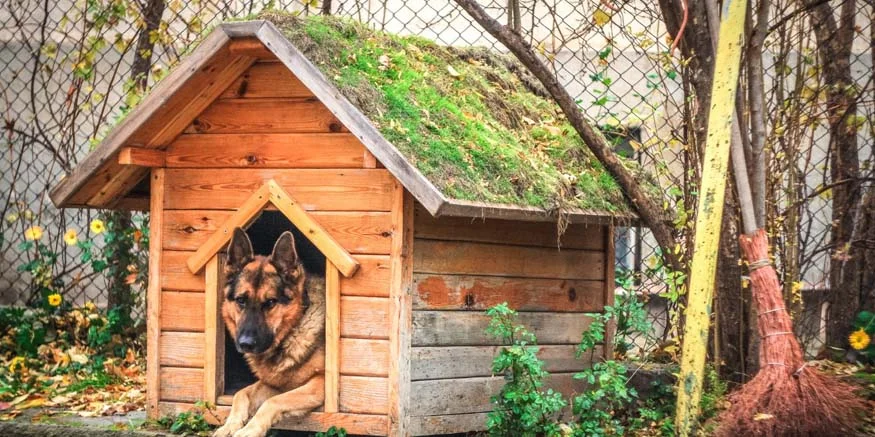As little ones start discovering the world, it becomes important for them to learn about different habitats around them. A habitat is where plants and animals naturally live, finding food, shelter, water, and all they need. This blog helps preschoolers easily recognize and understand various habitats in an informative way.
- Forests
- Deserts
- Oceans
- Freshwater
- Grasslands
- Mountains
- Urban Environments
- Polar Regions
- Wetlands
Forests are expansive landscapes adorned with trees and dense vegetation. They span across both tropical and temperate regions.
Covering around 6% to 7% of the planet’s land surface, tropical forests, also known as rainforests, have rich biodiversity and thrive in a consistently warm climate, housing towering trees and wildlife like vividly-hued birds and frogs.
Occupying about a quarter of the Earth’s forested areas, temperate forests undergo all four seasons—winter, spring, summer, and fall. Trees such as oaks and maples in these regions showcase a stunning transformation in autumn with brilliant colours.
Occupying about 29% of the world’s forest cover, the boreal forest, also known as the taiga, is found in very cold climates. It has evergreen trees like pines and spruces that keep their leaves all year.
There is also the woodland, which is a forest habitat with more open space and sunlight because the trees are spread out. Forests attract animals like deer and rabbits because the grasses and shrubs offer them food.
Birds, deer, and squirrels find their habitat in forests.
Deserts cover about one-fifth of the Earth’s surface. They are vast, dry lands with minimal rainfall. They vary in temperature from the hot Sahara Desert to the cold Gobi Desert. Despite their harshness, deserts teem with life, hosting plants and animals that have evolved to survive in these challenging conditions. Cacti store water in their thick leaves and animals like camels minimize water loss by sweating very little.
In deserts, temperatures fluctuate drastically between day and night, reaching scorching highs in the daytime and plunging to cold extremes after sunset. Despite these harsh conditions, human settlements thrive in some desert areas.
Also Read: Desert Animals: A List of Interesting Desert Creatures and Their Adaptations
The oceans, spanning over 70% of Earth’s surface, stand as the planet’s most extensive habitats. They host an incredible variety of life, ranging from minuscule plankton to the majestic blue whale.
Coral reefs play vital roles; they shield coastlines from waves, and provide sustenance and medicinal resources for humans. Unfortunately, these reefs are delicate and prone to damage from pollution and climate change.
Children need to recognize the five primary oceans: Pacific, Atlantic, Indian, Southern, and Arctic. Each of these immense bodies of water boasts distinct features and an abundance of marine life.
Freshwater habitats are areas where water is not salty and include lakes, rivers, ponds, and streams. These environments are crucial as they provide homes for many types of animals and plants.
Fish like salmon and trout swim in the water, while frogs leap on lily pads, and ducks paddle on the surface. Water lilies and reeds are among the plants that grow in or around water, aiding in its purification and offering food and shelter for various creatures.
These areas are inhabited by animals like fish, frogs, and ducks. Plants that grow well in freshwater include water lilies and cattails. Freshwater habitats are crucial as they provide drinking water for many land animals and humans.
Grasslands, referred to as prairies or savannas, are expansive areas dominated by grass as the primary vegetation. Present on every continent except Antarctica, these lands accommodate grazing animals like zebras and bison, alongside predators such as lions and wolves.
Grasslands serve crucial roles as they are utilized for farming and sustain a rich variety of wildlife, contributing to high biodiversity levels.
Mountain habitats exist at high altitudes, featuring a colder climate owing to their elevated position.
Animals like mountain goats and snow leopards have adjusted to the challenging terrain and sparse air found in these areas. Plants in mountain habitats are often short and tough to withstand the windy conditions.
Urban environments are human-made habitats found in cities and towns. While not natural habitats, they host many types of wildlife.
Pigeons, raccoons, and squirrels are some of the animals that have adapted to urban life. Amidst city landscapes, there are parks and green spaces that provide a taste of nature.
Also Read: World Nature Conservation Day: History, Significance and Threats
The polar regions like the Arctic and Antarctic are amongst Earth’s coldest regions with icy landscapes and extreme cold,
They host creatures like polar bears, penguins, and seals that have adapted to flourish despite the challenging conditions. Very few sturdy plants can grow in these frigid climates due to the scarcity of vegetation.
Wetlands are constantly or seasonally wet areas. They include swamps, marshes, and bogs.
They help clean water and prevent floods. Wetlands also provide homes for lots of different creatures like amphibians, birds, and insects.
Also Read: Inspiring a paradigm shift in education with Nature Based Learning
Importance of Teaching Habitats to Preschoolers
Teaching preschoolers about habitats is crucial for fostering an appreciation for the environment and wildlife. Understanding different habitats helps them recognize the importance of protecting these areas for the animals that live there. It also builds the foundation for future science education and environmental stewardship.
Also Read: Nature Conservation Importance and Tips
At EuroSchool, we introduce preschoolers to different habitats to build their understanding of how living things relate to their surroundings and why conservation matters. These lessons are really important because they help kids care about nature and want to protect our planet for the future.









